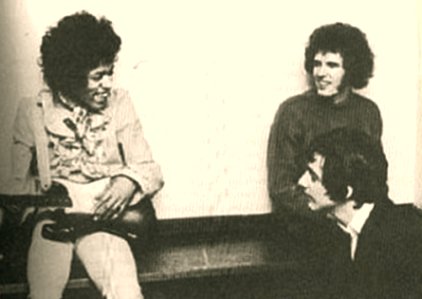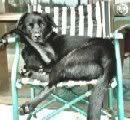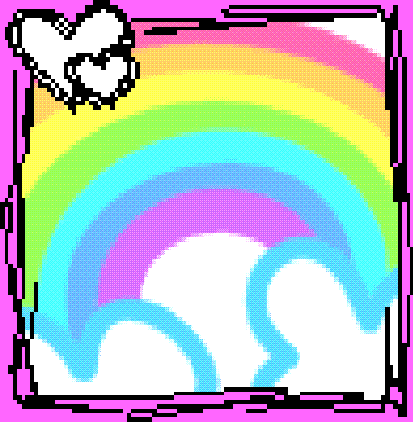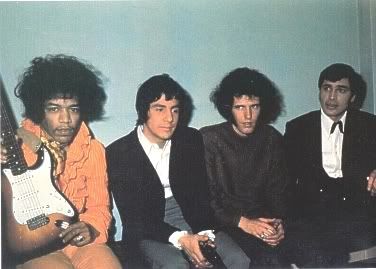FYI:
The debut of the flaming guitar was, in fact, March 31, 1967, at Finsbury Park Astoria (later the Rainbow) when some promoter with a misguided sense of humor billed the greatest electric rock guitarist the world is ever likely to see with the Walker Brothers, Cat Stevens and, God help us, Engelbert Humperdinck. Jimi was at the bottom of that incongruous pile.
My personal association with the great god had begun a year earlier, when his manager Chas Chandler played me a few demo tapes and tried to enlist my help to name-drop his protégé in some of the gossip columns I was writing for, teen magazines like Rave, Fabulous and Look Now.
I met what looked like the Wild Man of Borneo in his manager's office in Gerrard Street, Soho, in September 1966. He came on like Whispering Smith. However, you quickly learned with Jimi that although he had a shy, almost diffident approach, it masked a quite waspish sense of humour.
Legends don't spring from nowhere. Jimi had already played as a session guitarist in America for the likes of the Supremes, Slim Harpo, Jackie Wilson, the Womack Brothers and Sam Cooke. During 1965, he had toured in backing bands for The Isley Brothers and Little Richard.
At our first interview for the teen mags, Jimi told me a few stories about the famous old rockers he had worked for. The previous year, for instance, Little Richard had sacked him — for wearing a fancy shirt!
A year later and Jimi had most of the rock glitterati by the genitalia as the Beatles, the Stones, the Who and our own young guitar princes Clapton, Page, Beck and Townshend fell at his feet in the Speakeasy, the Bag O'Nails and the Marquee, the London clubs where he played.
After just a few months in London, Jimi had affected some of the more outrageous dress attire that he had seen Little Richard adopt. To the flamboyant boa and headbands which were trademarks of his former boss, he added a Crimean military jacket, tight red pants and a little psychedelia with medals and some tie-dye ribbons.
It was a few hit singles later, in the spring of '67, that the genius agent had the bright idea of packaging the extraordinarily diversified talents of the Walker Brothers, Cat Stevens, Engelbert and Jimi together on the same bill. The Astoria was the first night of the tour and found Chas Chandler, road manager Gerry Stickles, Jimi and myself in the dressing room, trying to plot some way of stealing the press thunder from under the fringes of the Walker Brothers, current screamage wonders and top of the bill.
This was the package that Jimi would later refer to in a postcard home as "that silly little tour." One of the few bright spots was Humperdinck's bass player Jimmy Leverton, who became good mates with Jimi and the Experience. He was sacked by the end of the tour for "associating with undesirables." Jimi later accused Humperdinck of killing the whole show every night: "I was setting the stage on fire for pretty people… and then Engelfluff would go and stop it dead."
March 31, 1967 and the preparations for the gig at the Astoria. Opening night of the tour. Press present. Jimi, Chas Chandler, roadie Gerry Stickles and I sat in the dressing room trying to plot how to steal the thunder from the other stars.
"The destruction thing is being done to death," I said. "You can't do that or you'll be accused of just copying Townshend. Now even the Move have taken to smashing up TVs on stage."
"Mebbe I could smash up an elephant," suggested Jimi quietly.
"We just need to pull a stunt that will grab the headlines," said Chas. "Something outrageous."
"It's a pity you can't set fire to your guitar," I said, hesitantly, "but, of course, a solid body would never burn."
There was a significant pause while I waited for the ridicule to begin, but Chas was smiling and staring at the road manager. "Gerry, go and buy some lighter fuel."
Hendrix was now giggling about setting the place on fire and Chas was busy explaining to me the chemistry of pouring lighter fuel on the guitar so that it simply burnt off the top. "It will go up like a torch." He enthused.
"How about me?" mumbled Jimi, but he was already hooked on the whole idea.
The guitar went up about halfway through "Wild Thing," with Jimi straddling his Fender and applying several matches before the instrument caught alight. There was a pathetic little pile of used matches on the stage afterwards. It was not exactly a towering inferno, but Jimi made the most of it by whirling the guitar around his head and throwing in a touch of the mad axeman for good measure.
In the wings, the Astoria fire officer was having a blue fit, screaming retribution and recriminations. "What the f**k do you mean by starting a bloody fire hazard and then whirling it around your head?" he demanded, as Jimi hurriedly exited stage left. "I was just trying to put it out," said Jimi with a nervous grin as he ran past him and disappeared in the direction of the dressing rooms.
Chas caught up with Jimi backstage, wrapped a crepe bandage round his wrist and told him to wear it for a week. "You have just left for the burns unit of St Bart's Hospital," dramatized Chas. "Now get the hell out of here before the s**t hits the fan."
Read dozens more Jimi Hendrix interviews and reviews at
www.rocksbackpages.com. Over 13,000 articles by the greatest writers from the finest rock publications of the last 40 years.














 , large b&w photo that unfortunately goes over 2 pages and splits in the middle of Cat if I remember correctly... will try to scan it.
, large b&w photo that unfortunately goes over 2 pages and splits in the middle of Cat if I remember correctly... will try to scan it.